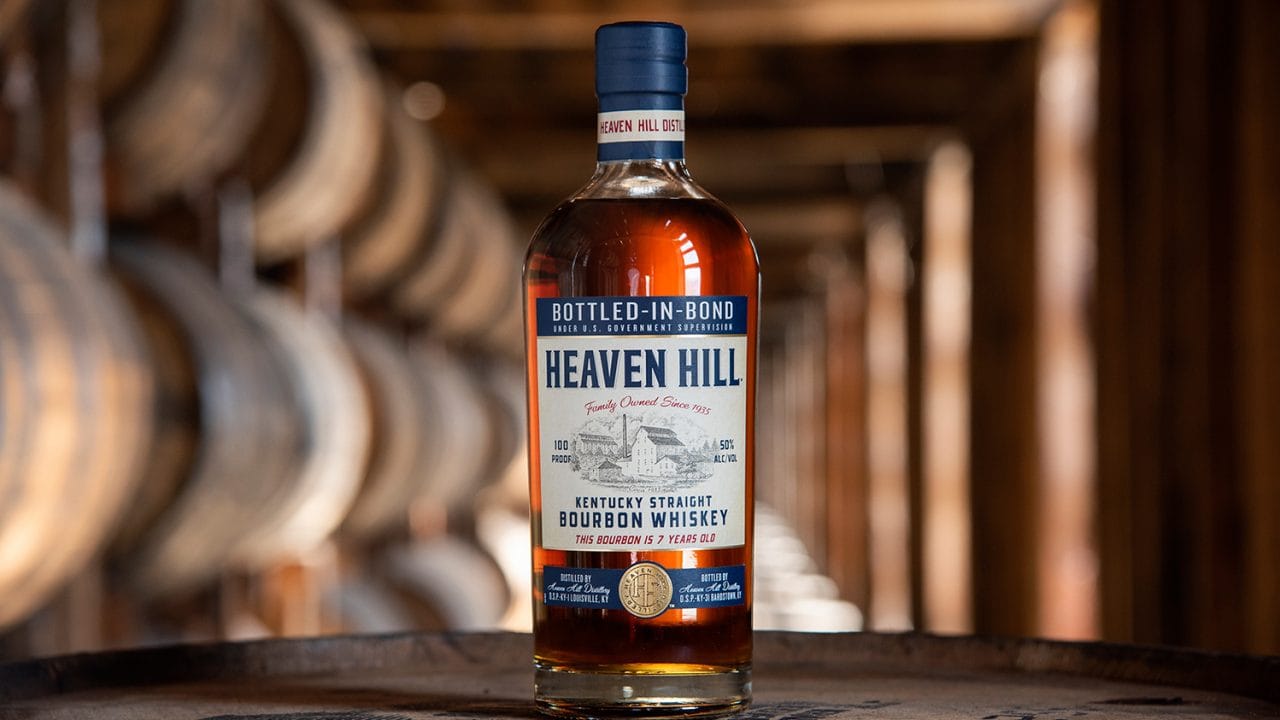
When it comes to bourbon, there are a handful of rules and regulations. To be considered a bourbon whiskey, it must have a mash bill of at least 51% corn (although the percentage is usually higher) with the rest of the ingredients, including any combination of wheat, rye, or barley. It also must be made in the U.S. (although not just in Kentucky as a bourbon purist might try to tell you).
Bourbon must also be distilled to a proof no higher than 160 proof. When entering the barrel, it can be no higher than 125-proof. It must be matured in new, charred American oak barrels. It also must be bottled at no less than 80-proof. For regular bourbon whiskey, there’s no aging period required. But, if you want to refer to it as a “straight” bourbon, it must be matured for at least two full years. And while these rules seem fairly complicated, they get even more strict when you get into bottled-in-bond whiskey.
What is bottled-in-bond whiskey?

While bourbon already has specific rules and regulations, the bottled-in-bond designation goes beyond that. And while bottled-in-bond isn’t exclusive to bourbon, it’s the style of whiskey you’re most likely to see with this label. For those who have seen this title and still don’t know what it means, it’s a means to protect the integrity of whiskey.
Distillers can’t just randomly slap the words “bottled-in-bond” on the expression’s labels. To receive this designation, the distillery must follow a few extra rules and regulations. It must be matured for at least four full years in a federally bonded warehouse. It also must be produced by only one distillery during one season and be bottled at exactly 100-proof.
Why was it created?

Unlike today’s strict standards, the 1800s was like the whiskey-soaked Wild West. There weren’t many regulations governing the quality of whiskey. Also, since most whiskey was transported and purchased in barrels and not bottled, it was easy to add things and water it down before it was imbibed by the public. That all changed on March 3, 1897.
This was the date the Bottled in Bond Act was signed into law by then-President Grover Cleveland. It was drafted by Congress to guarantee the quality and age of whiskey in an effort to create specific quality standards and protect consumers from tainted and subpar whiskey. It also created a new market for bottling whiskey and made distillers label their whiskey properly (whether it was blended or straight whiskey). The act also required distillers to add a tax stamp seal to explain when and where the whiskey was crafted.
Our favorite bottled-in-bond bourbons

Now that you’ve learned a little bit about the history and importance of bottled-in-bond whiskey (and bourbon, specifically), it’s time to find some to add to your home bar. Keep scrolling to see a few of our favorite bottled-in-bond bourbons.
Old Grand-Dad Bonded

Old Grand-Dad is the most beloved of all of Jim Beams’ “Old” line. While you can’t go wrong with the classic Old Grand-Dad or Old Grand-Dad 114, we prefer Old Grand-Dad Bonded. Made with a mash bill of 63% corn, 27% rye, and 10% malted barley, it’s aged for a full four years and bottled at a potent 100-proof. The result is a surprisingly complex, spicy, mixable whiskey with notes of cinnamon candy, peppery rye, vanilla beans, butterscotch, and oak.
Henry McKenna Single Barrel Bottled-In-Bond

Back in 2019, Henry McKenna Single Barrel Bottled -In-Bond Bourbon blew up when it was named the best whiskey in the world at the San Francisco World Spirits Competition. And while the hullabaloo has died down, it’s still a tremendous bottled-in-bond bourbon. Matured for a full ten years, this 100-proof whiskey is known for its mix of toasted vanilla beans, butterscotch, honey candy, gentle spices, and oak wood.
Heaven Hill 7-Year-Old Bottled-In-Bond

Ask a bartender or avid bottled-in-bond bourbon drinker to tell you their favorite, and there’s a good chance a handful will say Heaven Hill 7-Year-Old Bottled-In-Bond. This popular, award-winning whiskey was matured in new, charred American oak barrels for a full seven years (adhering to bottle-in-bond laws). It’s known for its complex, sippable flavor profile featuring notes of honey, toffee, vanilla, and gentle, peppery rye. The finish is long, lingering, and very warm.
Bottom line

The rules for bottled-in-bond whiskey are very strict. If you’re a person who enjoys using your whiskey for mixing but you’re afraid a lower-ABV bourbon will become lost and watered down in the drink, 100-proof bottled-in-bond whiskey is for you.



